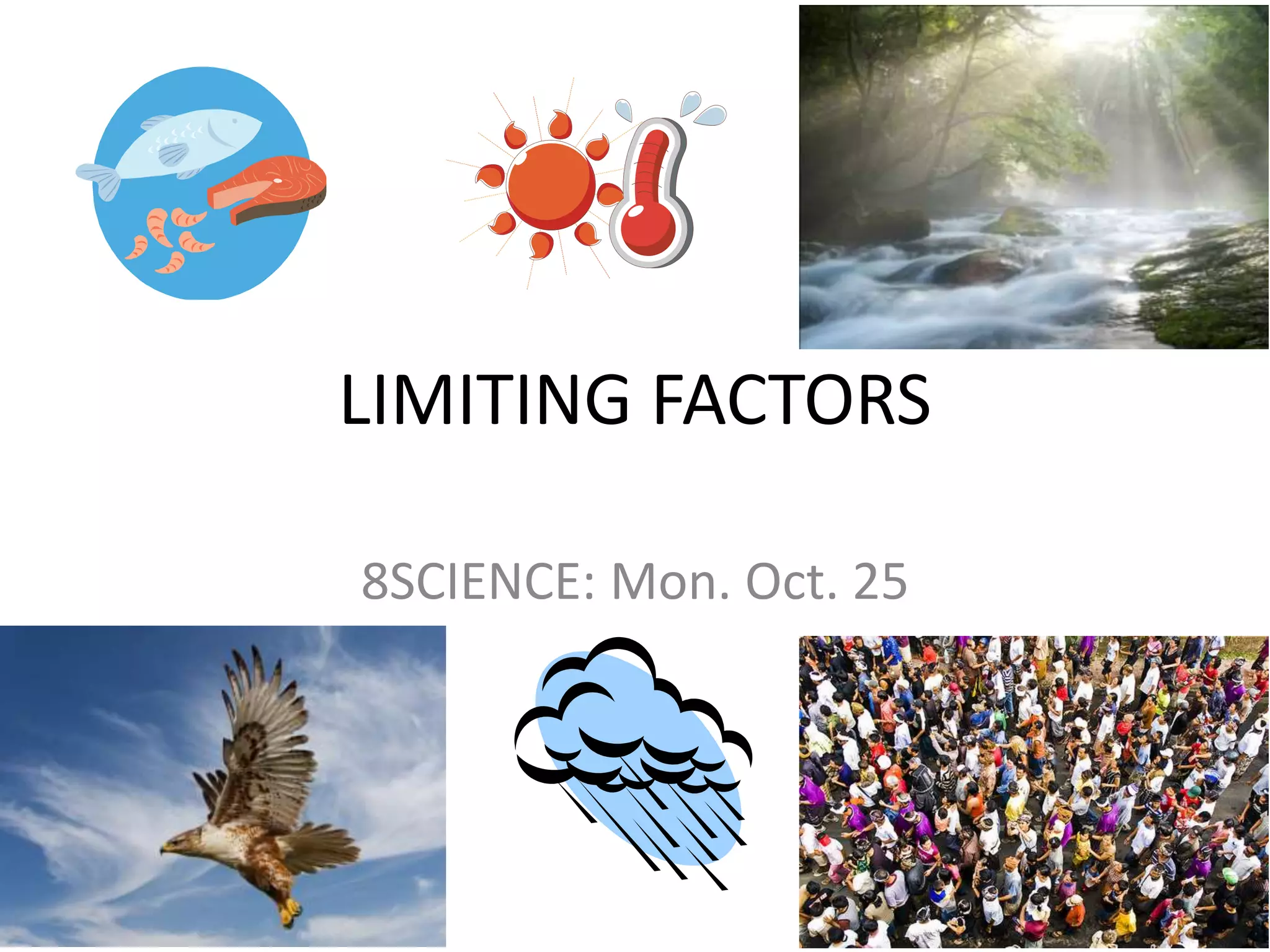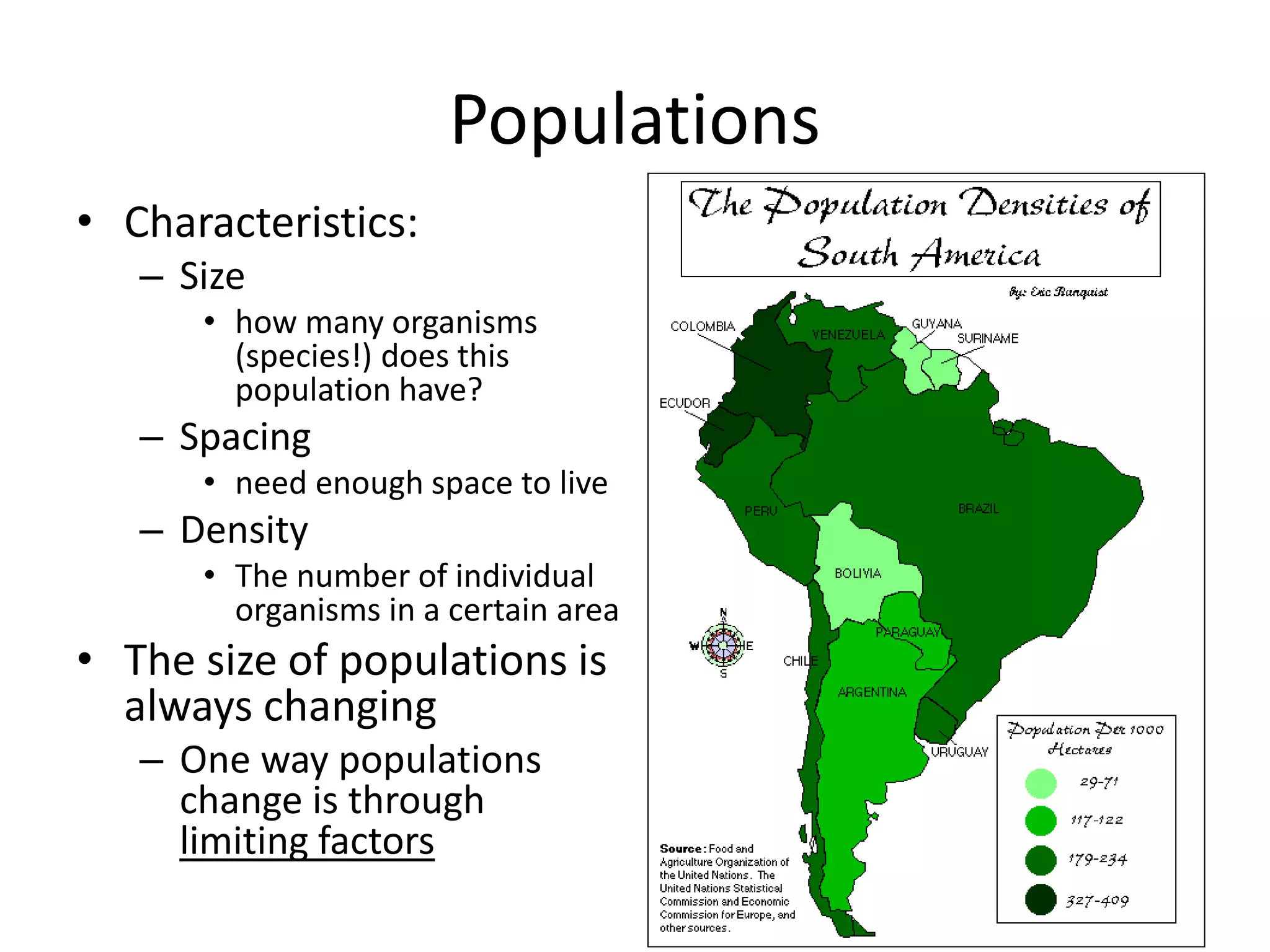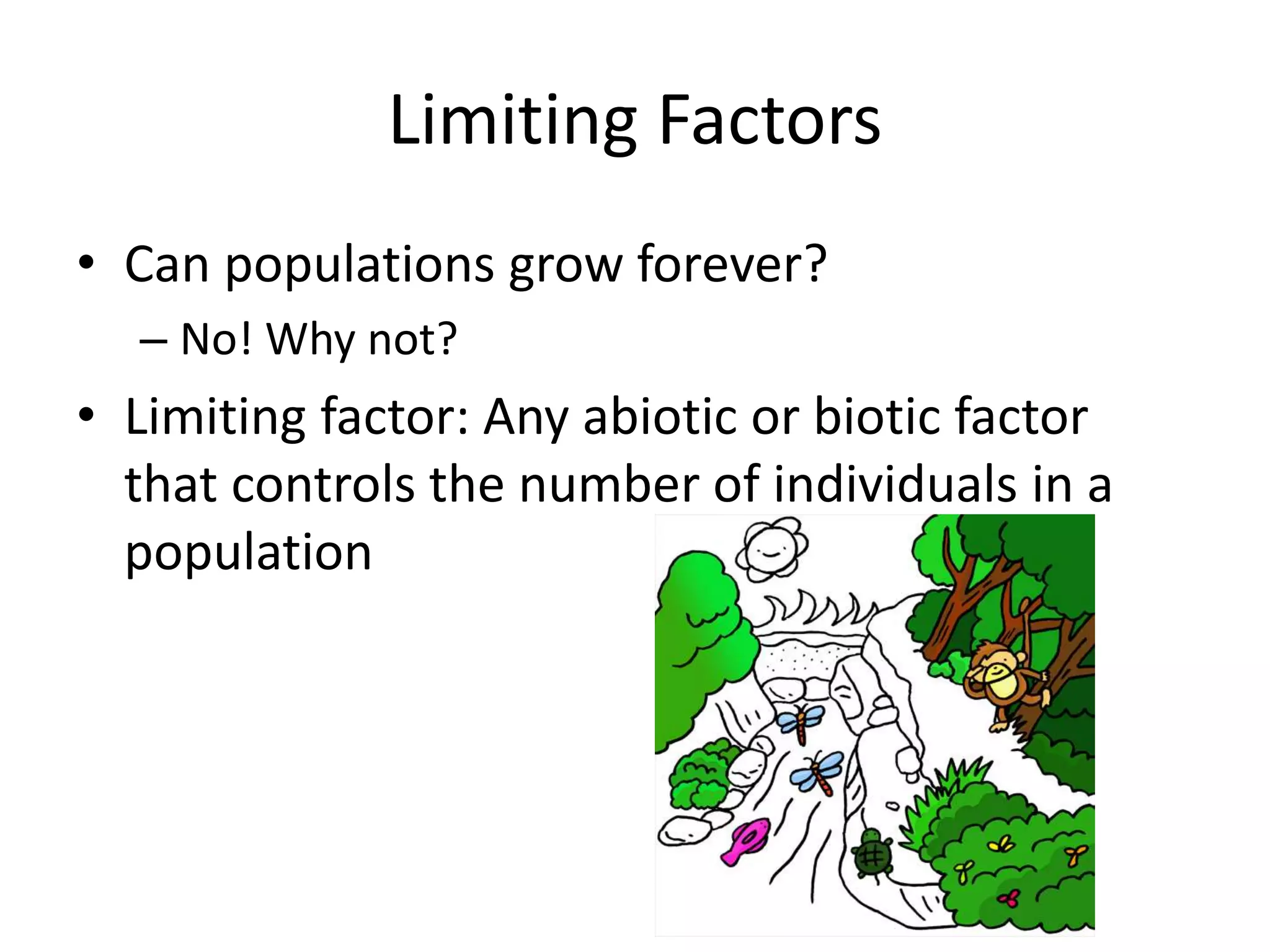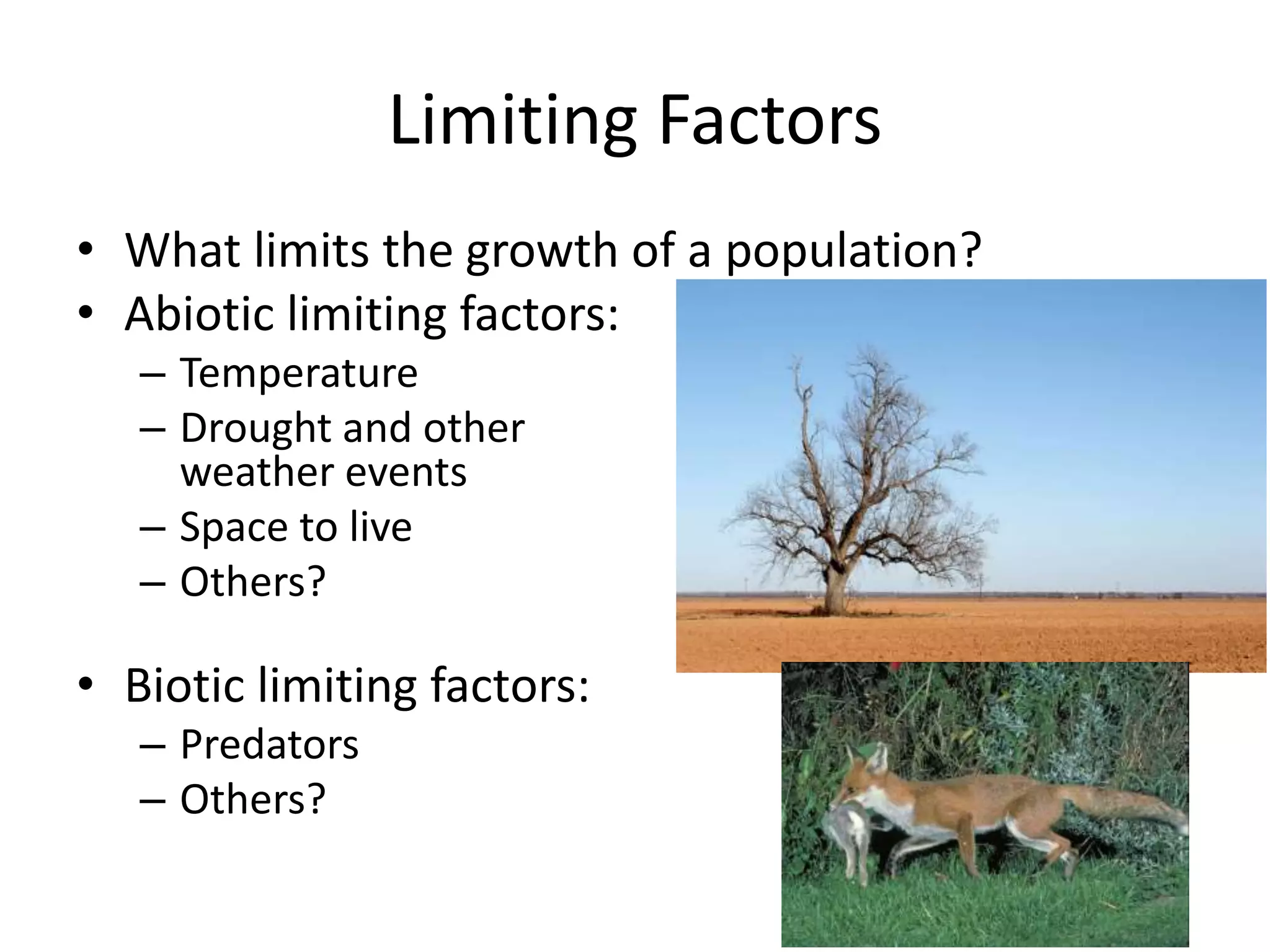A population is a group of the same species that lives in the same area and competes for resources like food, water, and space. Populations are always changing in size due to limiting factors, which are abiotic or biotic factors that control population numbers. Limiting factors include temperature, drought, space, predators, and competition between organisms over resources needed for survival and reproduction.





